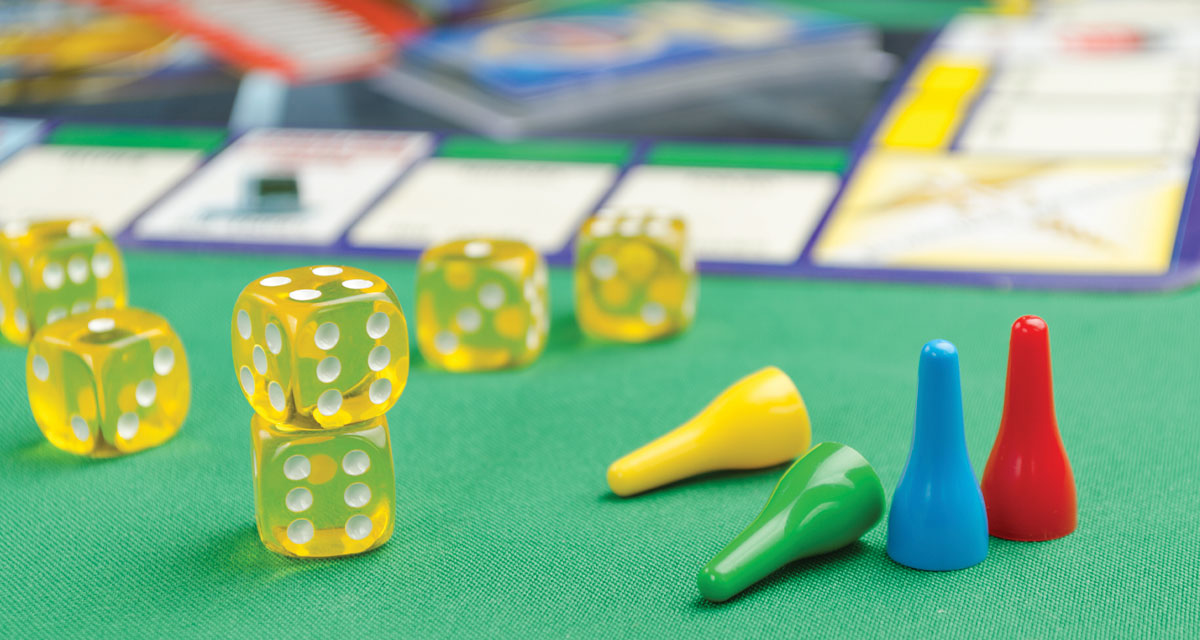The sounds of crickets, a whippoorwill’s call and my grandparents’ stationary fan set on high remind me of those summer evenings we gathered at the kitchen table to play one of four games – Crazy 8s, Scrabble, Monopoly or Boggle. Without realizing the educational value, my sister and I gained much more than memories. Beyond the enjoyment of being together, we learned the importance of rules, patience, taking turns, observation and using decisions to solve problems. While the times have changed, today’s computer-savvy youth will still gain the same significant benefits from holding cards and moving tokens around a board; so, this summer, begin a new family routine by inviting the grandparents, the aunts and the uncles to your game nights. While there are new games to learn and enjoy, the classics remain family favorites!
Spot It! (Ages three and up)
“Spot it” can handle up to eight players; therefore, live up to the instructions by saying, “the more, the merrier!” Young players will not only develop picture recognition skills but learn how to make a match quickly! In “Spot It!” all ages of children will love the variety of themes to fit any player or occasion.
Crazy 8s (Ages three and up)
Old Maid is a classic card game, but holding so many cards can be cumbersome for a young child. On the other hand, “Crazy 8s” is a great game to teach a preschooler the rules of shapes, colors and wild cards’ value. When the rules are understood, consider, for instance, requiring all “2” cards to result in the opponent picking up two cards and losing a turn. Adding one or two “wild rules” boosts the level of surprise and thrill in playing.
Classic Trouble (Ages five and up)
Hitting the “pop-o-matic” die is one of the appealing qualities of this classic game. Young children can practice counting, waiting their turn and accepting the roll of the dice to either go forward or be sent back to start again. Excitement builds when all four players take a turn.
Qwirkle (Ages six and up)
Everyone loves a game that all ages can enjoy. “Qwirkle” delivers. The game’s objective requires players to match colors and shapes through tactical maneuvers and well-played strategies. Some may think it is a cross between dominoes or Scrabble. In this game, the player who has the most points wins. Children can judge their scores based on previous games.
Ticket to Ride (Ages eight to 12)
Children fascinated by maps and geography will love the game “Ticket to Ride.” For two to five players, participants collect train cards to claim railway routes across the map. Through skill and strategy, individuals learn how to connect distant cities by building the most extended route. Additional versions are available in various countries, and an expansion pack offers older maps and a profound history, such as the United States in 1910 or 1912 Europe.
PicWits (Ages 10 and up)
A game of laughter and family fun, “PicWits” combines deductive reasoning with matching. Participants must look at their cards to see which pictures would best complement a caption. A judge determines who wins. One warning to this game: Some picture cards may appear “too bizarre” for young children; therefore, remove questionable cards before you start playing. “PicWits” is a game players can jump into at any time!
Game nights bring the family together, whether you decide to teach classic Yahtzee, Monopoly, Scrabble, chess or Clue, or learn a new game such as “Kids of Carcassonne,” “Professor Noggin’s Countries of the World Card Game” or “Power Grid.” No matter your child’s level of skill and ability, there is a game for everyone!



















